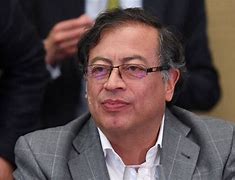In the midst of one of history’s most controversial wars, there emerged a photograph that would come to define an era. It captured the raw anguish and devastation of conflict in a single, haunting image. The iconic picture depicted a young Vietnamese girl running down a road, her body engulfed in flames from a Napalm attack, her face contorted in pain and fear.
This snapshot, known as the ‘Napalm Girl’ photo, struck a chord with people around the world and played a crucial role in shaping public perception of the Vietnam War. Its impact was profound; it humanized the war’s casualties and highlighted the horrific realities faced by civilians caught in the crossfire.
### A Divisive Attribution Dispute
The question of who actually took this powerful photograph has sparked heated debate within the photojournalism community for over five decades. While Nick Ut, a photographer working for The Associated Press (AP), has long been credited with capturing the moment, recent developments have cast doubt on this attribution.
A documentary titled “The Stringer” raised questions about the true creator behind the lens and suggested that another freelance photographer might be responsible for the iconic shot. This revelation led to an investigation by the World Press Photo Foundation, which challenged Ut’s claim to authorship.
### Reevaluating History
After months of scrutiny and analysis, the World Press Photo Foundation made a controversial decision to suspend Nick Ut’s credit for the ‘Napalm Girl’ image. The foundation stated that other photojournalists involved in covering the Vietnam War could have been better positioned to take such a pivotal photograph.
This development not only questioned Ut’s legacy but also rekindled discussions about journalistic integrity and accuracy when attributing historic images. James Hornstein, Ut’s lawyer, vehemently refuted these claims as damaging to his client’s reputation and professionalism.
### Expert Insights
In light of these revelations, renowned experts in photojournalism underscored how critical it is to accurately document and credit iconic images from significant historical events like the Vietnam War. Dr. Anna Lee Smithson, a professor specializing in visual storytelling at Columbia University Journalism School commented on this issue:
“Preserving authenticity in photojournalism is paramount as these images shape our collective memory of past conflicts.”
Dr. Smithson emphasized that revisiting attributions challenges us to reexamine narratives we’ve accepted unquestioningly for years—a process essential for creating accurate historical records.
### Legacy Under Scrutiny
The controversy surrounding Napalm Girl serves as a poignant reminder of how complex narratives can become woven into historical events. As we delve deeper into uncovering truths behind familiar stories, we are compelled to rethink our understanding of past occurrences and acknowledge nuances previously overlooked.
The enduring power of photography lies not only in its ability to freeze moments in time but also its capacity to provoke thought, evoke emotion, and spur change—making it an invaluable tool for documenting our shared human experience.








Leave feedback about this